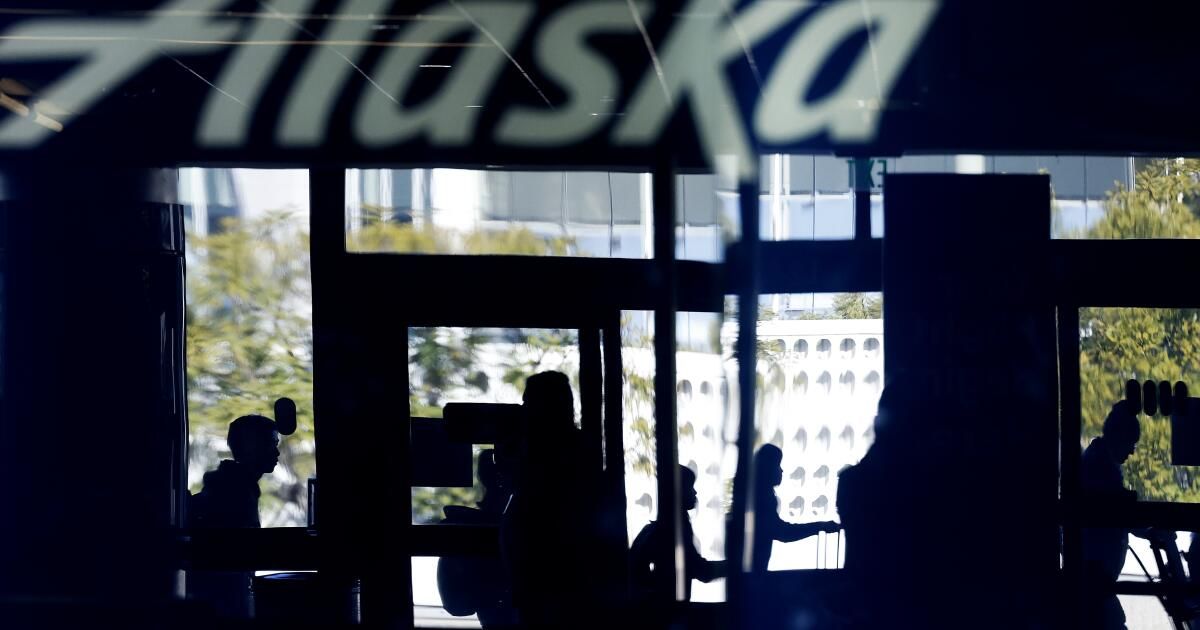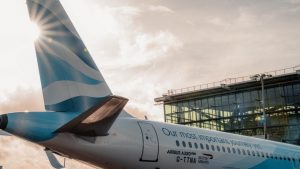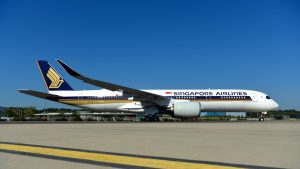As shocking as the explosion on Alaska Airlines Flight 1282 was last week, federal officials initially estimated that the problem that caused a gaping hole to open in the plane's fuselage would be relatively easy to diagnose and fix.
However, on Tuesday the Federal Aviation Administration said the process will take a little longer than expected. For the time being, all aircraft configured in the same way as Flight 1282 (a recently introduced upgrade of the extremely popular Boeing 737) would remain grounded.
That means more United and Alaska airline travelers will see their flights canceled in the coming days. Here's what we know so far about the disruption to air travel, when it might end, and what the eventual return of these planes to service could mean for travelers, especially nervous ones.
What aircraft are affected?
Flight 1282 was flown on a customized version of the Boeing 737 Max 9, the latest in a series of revisions designed to expand the 737s so they could carry more passengers and generate more revenue. The Max 9s are nearly nine feet longer than the 737 Max 8s that came on the market a few years earlier, and when carrying the full complement of seats, require an additional emergency exit between the wings and tail.
The number of emergency exits required depends on the number of seats, said Robert L. Ditchey, an aviation consultant based in Marina del Rey. But some airlines ordered a modified version of the Max 9 with fewer seats, foregoing the need for additional departures. This means fewer potential tickets sold, but also fewer maintenance costs associated with the emergency door and exit slide, he said.
Instead of creating a new fuselage for the alternative version, Boeing used the same one but covered the holes for the two additional emergency exits with a plate bolted to the frame. That's the piece, known as the door plug, that exploded on Flight 1282 when the interior of the plane was pressurized.
Which airlines have planes on the ground?
Boeing will not reveal its customer list, but Alaska and United Airlines are the only domestic airlines that have been publicly identified as having the modified 737 Max 9s. United says it has 79 Max 9s and Alaska says it has 65.
Aviation website Flightradar24 named three foreign airlines that operate Max 9s with door plugs: Copa Airlines, Aeroméxico and Turkish Airlines.
The FAA, whose authority extends only to U.S. airlines, says it ordered 171 planes grounded. That represents a small percentage of all aircraft in service in the United States. However, neither Alaska nor United have enough planes to cover all scheduled flights for their Max 9s, forcing more than 200 cancellations daily.
United said it would cancel 170 flights Tuesday and redeploy other planes to replace Max 9s on another 45. Alaska said it had canceled 109 flights as of 12:30 Tuesday.
How long will the planes be on the ground?
The FAA's emergency airworthiness directive established a process by which affected aircraft can be returned to service. The planes would be inspected by the airlines following FAA guidelines and take necessary corrective actions. The inspections would take only four to eight hours by plane, the agency estimated Saturday.
This is standard operating procedure for the FAA, which does not have the staff to conduct inspections itself, Ditchey said. Instead, it leaves the job to certified technicians who work for the airlines.
The delay here is getting to the point where inspections can begin.
On Tuesday, the FAA said on X.com (formerly Twitter) that the process had to start with Boeing providing instructions to airlines on how to inspect and maintain the plugs. “Boeing yesterday provided an initial version of the instructions that they are now revising due to comments received in response,” the agency said. “Upon receipt of the revised version of Boeing's instructions, the FAA will conduct a thorough review.”
“The safety of the flying public, not speed, will determine the timeline for returning the Boeing 737-9 Max to service,” the FAA said.
Industry analyst Bob Mann said the revised instructions likely relate to what airlines found when they began examining plugs in preparation for inspections. “Most maintenance is like this: You go in looking for one thing and you find three things,” he said.
The length of the work depends on the type of problems that are discovered, Mann said. For example, it could be a matter of tightening existing fasteners better or it could require a different type of fastener.
Still, analysts predicted the planes would be back in service within two weeks. “Nothing I've heard so far rises to the level of 'We want to redesign this,'” Mann said.
How do I know if the flight I booked will be affected?
The short answer is that you can't know for sure because airlines can deploy new planes on routes after you buy the ticket. But if you visit the airline's website, you can see what type of plane is assigned to your route now. One thing to note is that the plane on the ground is a 737 Max 9, not a 737-900. The names are similar, but the latter is an older plane that was part of a previous series of Boeing upgrades.
What happens if my flight is cancelled?
With some restrictions, Alaska allows passengers to rebook their flights for free and, in some cases, cancel them for future credit. United is also allowing free rebookings for passengers on affected flights, but also full refunds.
Paul Hudson, founder of the airline passenger advocacy group flyersrights.org, said passengers on canceled flights are entitled to their money back. “You have the absolute right to have your ticket refunded. There is no need to accept a coupon or a later flight,” Hudson said.
Of course, a refund for a ticket purchased too far in advance is unlikely to cover the cost of a flight booked at the last minute. And airlines are under no obligation to offer you an alternative flight on the same day, or to offer you a hotel room if you are forced to stay away from home overnight when traveling within the U.S., Hudson said. This type of accommodation is governed by the policies of each airline.
Hudson said that given the number of flights that are canceled even when planes are not grounded, travelers should always have a backup plan. One way to do this, he said, is to have a second, fully refundable ticket on a different airline to get you to your destination in case the first flight you booked is cancelled.
Other suggestions are to include an extra travel day, book nonstop flights to avoid being stranded halfway to your destination, and book flights that take off in the morning, Hudson said. “Because if your flight is canceled or delayed, you have time to make other arrangements,” she said.
Should I worry about flying Max 9 in the future?
The Max series has not enjoyed a great honeymoon. After the Max 8 planes were introduced, problems with an automated flight control system caused two planes to crash in Indonesia and Ethiopia, killing 346 people and prompting regulators around the world to ground the planes for at least 20 months. Those planes have been back in service in the United States for about four years. “Once [the Max 8] When he came back, he did exactly what he was supposed to do,” Mann said. The same flight control system is found in the rest of the Max models.
Ditchey argued that the problem with the Max 9 requires structural change, not just stronger fasteners. This is due to the stress caused by the difference in air pressure inside and outside an airplane.
Airlines pressurize their interiors as they ascend because there is not enough oxygen to support life in the thinner atmosphere at higher altitudes. But if a hole suddenly opens in the fuselage when a plane is high above the ground, the increased pressure inside can force people and objects to be ejected from the plane.
(In that sense, it was a good thing that Flight 1282 blew up shortly after takeoff, when it was at 16,000 feet instead of 30,000, and that there was no one sitting in the seat next to the plug. “If you have a big hole and someone is sitting next to that hole and not wearing a seat belt… the color disappears,” said Barry Schiff, an aviation safety consultant).
Ditchey said emergency doors, like regular airplane doors, are larger than the fuselage opening they fit into, so interior pressure binds them more tightly to the frame. The plug, however, does not have that type of “failure protection.” A true solution, he said, would require designing the outlet with a safety device like emergency doors.
Mann disagreed, saying that if the plug is connected correctly, it should transfer pressurization stress appropriately to the fuselage.
Hudson said that after the Max 8s returned to service, airlines offered penalty-free flight changes to any passenger who did not want to fly on one of those planes. “That's all over now,” he said.
Whether airlines take a similar course with the Max 9, he said, “depends on public pressure.”












